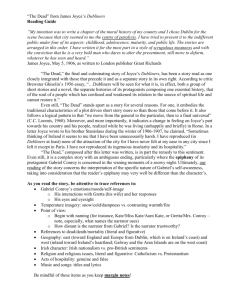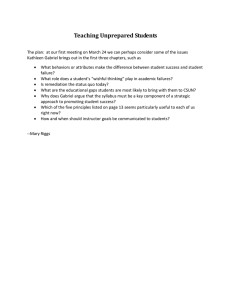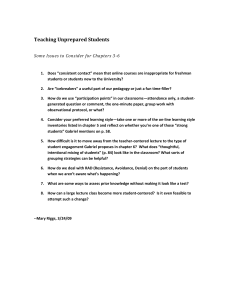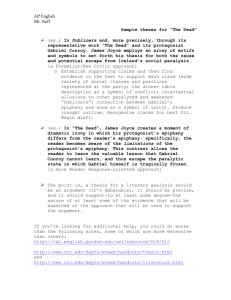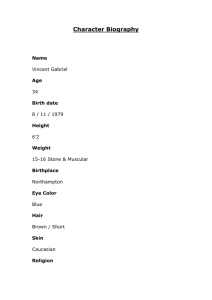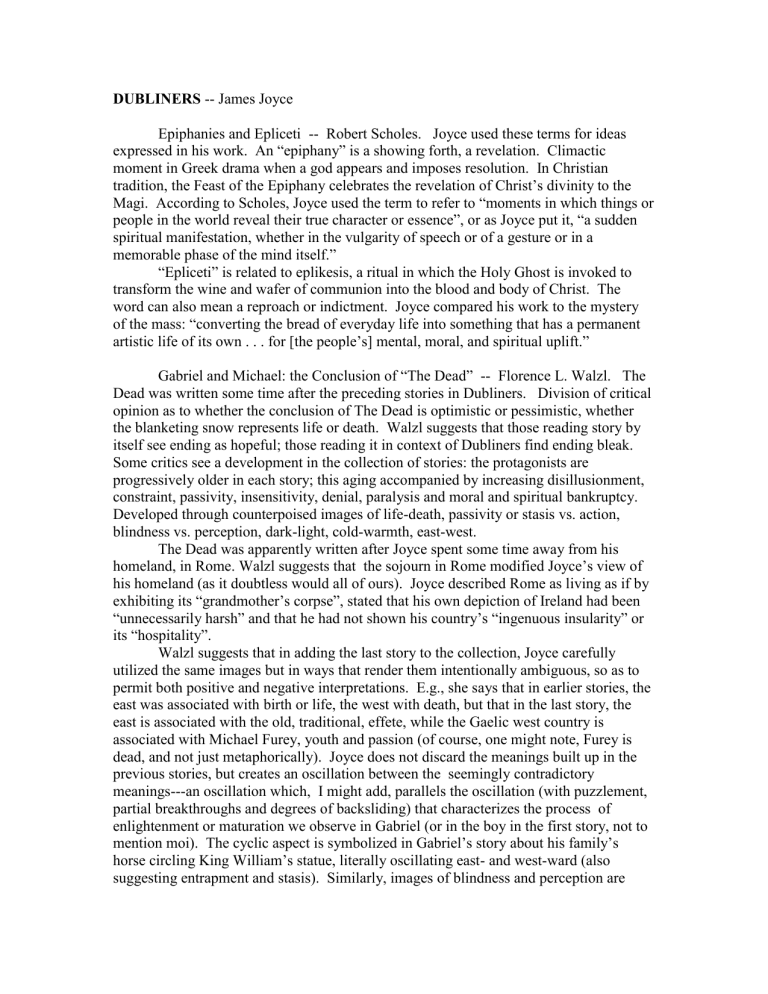
DUBLINERS -- James Joyce Epiphanies and Epliceti -- Robert Scholes. Joyce used these terms for ideas expressed in his work. An “epiphany” is a showing forth, a revelation. Climactic moment in Greek drama when a god appears and imposes resolution. In Christian tradition, the Feast of the Epiphany celebrates the revelation of Christ’s divinity to the Magi. According to Scholes, Joyce used the term to refer to “moments in which things or people in the world reveal their true character or essence”, or as Joyce put it, “a sudden spiritual manifestation, whether in the vulgarity of speech or of a gesture or in a memorable phase of the mind itself.” “Epliceti” is related to eplikesis, a ritual in which the Holy Ghost is invoked to transform the wine and wafer of communion into the blood and body of Christ. The word can also mean a reproach or indictment. Joyce compared his work to the mystery of the mass: “converting the bread of everyday life into something that has a permanent artistic life of its own . . . for [the people’s] mental, moral, and spiritual uplift.” Gabriel and Michael: the Conclusion of “The Dead” -- Florence L. Walzl. The Dead was written some time after the preceding stories in Dubliners. Division of critical opinion as to whether the conclusion of The Dead is optimistic or pessimistic, whether the blanketing snow represents life or death. Walzl suggests that those reading story by itself see ending as hopeful; those reading it in context of Dubliners find ending bleak. Some critics see a development in the collection of stories: the protagonists are progressively older in each story; this aging accompanied by increasing disillusionment, constraint, passivity, insensitivity, denial, paralysis and moral and spiritual bankruptcy. Developed through counterpoised images of life-death, passivity or stasis vs. action, blindness vs. perception, dark-light, cold-warmth, east-west. The Dead was apparently written after Joyce spent some time away from his homeland, in Rome. Walzl suggests that the sojourn in Rome modified Joyce’s view of his homeland (as it doubtless would all of ours). Joyce described Rome as living as if by exhibiting its “grandmother’s corpse”, stated that his own depiction of Ireland had been “unnecessarily harsh” and that he had not shown his country’s “ingenuous insularity” or its “hospitality”. Walzl suggests that in adding the last story to the collection, Joyce carefully utilized the same images but in ways that render them intentionally ambiguous, so as to permit both positive and negative interpretations. E.g., she says that in earlier stories, the east was associated with birth or life, the west with death, but that in the last story, the east is associated with the old, traditional, effete, while the Gaelic west country is associated with Michael Furey, youth and passion (of course, one might note, Furey is dead, and not just metaphorically). Joyce does not discard the meanings built up in the previous stories, but creates an oscillation between the seemingly contradictory meanings---an oscillation which, I might add, parallels the oscillation (with puzzlement, partial breakthroughs and degrees of backsliding) that characterizes the process of enlightenment or maturation we observe in Gabriel (or in the boy in the first story, not to mention moi). The cyclic aspect is symbolized in Gabriel’s story about his family’s horse circling King William’s statue, literally oscillating east- and west-ward (also suggesting entrapment and stasis). Similarly, images of blindness and perception are initially used to suggest Gabriel’s self-centeredness, insensitivity and unconscious avoidance but are later used to describe the enlargement in his insight and perspective. Walzl proposes that Gabriel’s epiphany arises from an imaginary confrontation between him and Michael Furey. Their names significant as angels. Archangel Michael higher rank; traditionally associated with the metal silver and with water, called “the prince of snow.” Gabriel associated with gold, called “the prince of fire.” Michael primarily the angel of the Last Judgment; Gabriel of the Annunciation. These and other images set up a paradoxical contrast between the “living” ghost, Michael, and the “dead” man of flesh, Gabriel. Toward the end of the story, it is the “few light taps” of snow on the hotel room window, recreating the sound of the gravel Michael threw at Gretta’s window so long ago, that call Gabriel to the realization that the “time had come for him to set out on his journey westward” and to his final vision of the snow blanketing the living and the dead. The Sisters -- C.S. First story: proleptic; a programme or roadmap for Dubliners; mirror-image of The Dead. A literal death begins the book; a figurative death ends it; in both, rebirth is intimated, though only as a possibility, not a probability, and perhaps only in the wake (awake) of death (cf. Christ). Like Gabriel in The Dead, protagonist is living with aunt (and uncle), presumably orphaned? Protagonist unnamed: everyman. ”Third stroke” ambiguous; one thinks of other things (and I don’t mean baseball) before aneurisms. From opening paragraph we might infer that this book will be about: (1) paralysis; (2) what’s left when you take away the main part; (3) the usurpation of spiritual by commercial values; and (4) studying squares of window to try to learn whether others are alive or dead (cf. suggestions of houses as persons). Cotter a key or wrench; his talk, together with Eliza’s, opens to the boy a new view on Flynn. Cotter works in distillery; “faints and worms” = semi-ironic reference to spirit and the serpent in Eden. Cotter and Eliza self-appointed interpreters; reality translated for the boy. (Previously, the boy accepted Flynn without reflection (imaging), without attempting to categorize or explain him.) Flynn a supposed spiritual guide, but himself lost. He and the boy perhaps both in a sense orphaned, not at home with their surroundings; like Adam and Eve, exiles. Two sisters plus the aunt in the final scene. It’s after sunset (death), but “the window-panes of the houses that looked to the west reflected . . . tawny gold . . . .” And the room in which Flynn is “coffined” is suffused with golden light “amid which the candles looked like pale thin flames.” Flynn’s hands “loosely retaining a chalice.” The sisters offer wine and crackers---a mini-communion (Nannie disturbed when boy refuses the crackers). Flynn makes a beautiful, resigned corpse because death was only a mini-transformation for him? Already a gnomon. “It was that chalice he broke. . . . That was the beginning of it. Of course, they say it was all right, that it contained nothing”---no Christ’s blood. After that, Flynn became at least mildly mad, a sort of fool. Without any real relationship other than with the boy; and even with him, chat revolved around Flynn’s obscure obsessions, inappropriate for a child. In these aspects and in the discolored teeth and the suggestions of repression and perversion, proleptic of the “queer old josser” in the next story, The Encounter. Was Gabriel the angel who told Adam and Eve of their exile?
